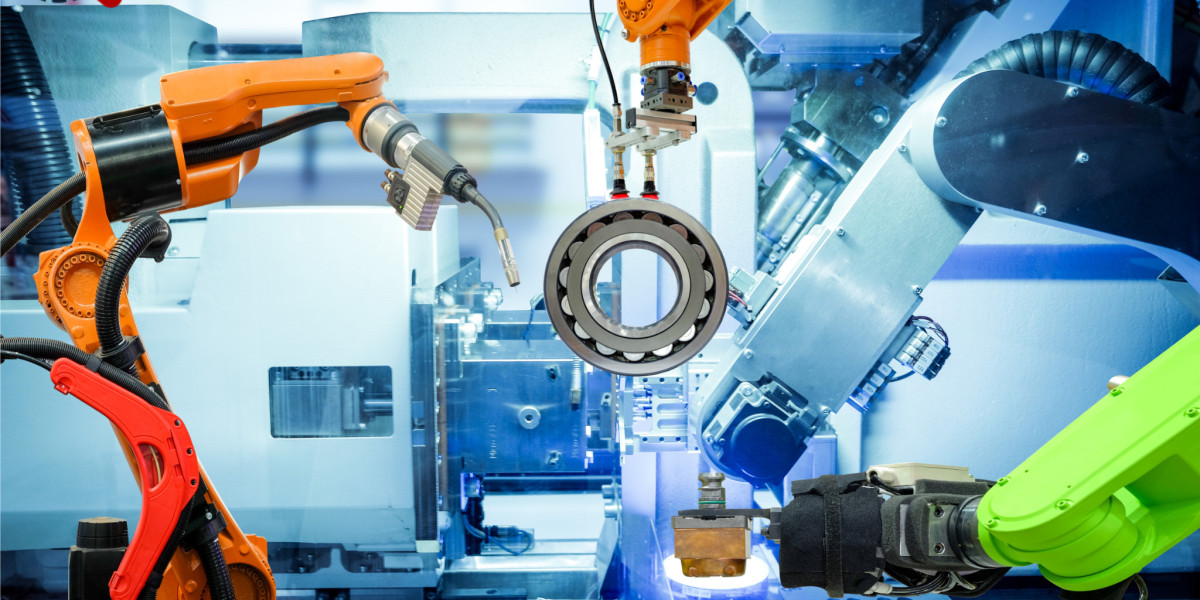The Soldering Equipment Market is experiencing significant growth due to the increasing demand for electronic devices and components. Soldering equipment is essential for assembling and repairing electronic circuits, making it a crucial part of the manufacturing process in various industries, including consumer electronics, automotive, and telecommunications. As technology advances and the complexity of electronic products increases, the need for efficient and reliable soldering solutions is becoming more pronounced. This market is expected to expand further as innovations in soldering technology continue to emerge, enhancing productivity and quality in electronics manufacturing.
The soldering equipment market has evolved significantly in recent years, becoming a critical component of the electronics manufacturing industry. Soldering, the process of joining metal components together by melting solder material, is essential in producing reliable electrical connections in devices ranging from smartphones and circuit boards to automotive systems and aerospace components. As technological advancements accelerate, the demand for precision, automation, and efficiency in soldering processes has risen, driving the market’s growth trajectory across the globe.
Market Overview
The global soldering equipment market encompasses a variety of tools and systems including soldering irons, stations, reflow ovens, wave soldering machines, and robotic soldering systems. These devices are used extensively in consumer electronics, automotive manufacturing, and industrial sectors where circuit assembly and repair are crucial. The ongoing miniaturization of electronic components has further increased the need for high-precision soldering solutions. Additionally, the push toward energy efficiency, advanced materials, and lead-free soldering due to environmental regulations has reshaped market dynamics.
Key Market Drivers
One of the major drivers of market growth is the expansion of the electronics manufacturing sector, particularly in Asia-Pacific countries like China, Japan, South Korea, and India. These regions serve as global hubs for electronic production, creating consistent demand for soldering solutions. The automotive industry’s transition toward electric vehicles (EVs) has also fueled demand, as EVs require complex circuit systems and battery management electronics. Furthermore, the trend toward automation and the rise of Industry 4.0 have encouraged manufacturers to adopt robotic and automated soldering systems that deliver accuracy, consistency, and scalability.
Technological Advancements
Recent innovations in soldering technology have enhanced performance, safety, and operational efficiency. Smart soldering stations equipped with temperature control, digital interfaces, and programmable settings have become standard in modern workshops. Additionally, the use of AI-powered soldering robots in mass production has improved precision while reducing human error. Reflow soldering with nitrogen atmosphere and selective soldering systems are also gaining traction due to their efficiency in handling surface-mount and through-hole components with minimal defects.
Challenges and Opportunities
Despite its promising growth, the soldering equipment market faces certain challenges. The high initial investment cost associated with advanced soldering systems may deter small-scale manufacturers. Furthermore, the shortage of skilled technicians and the complexity of modern circuit designs pose difficulties for manual soldering processes. However, these challenges have opened opportunities for training programs, automation, and software-based control systems that make soldering more efficient and accessible. Sustainability initiatives, such as the adoption of eco-friendly solder materials and energy-efficient equipment, also present new avenues for market expansion.
Regional Insights
The Asia-Pacific region holds the largest share in the soldering equipment market, supported by the region’s strong manufacturing infrastructure and favorable government policies. North America and Europe follow closely, driven by advancements in automotive electronics, aerospace, and industrial automation. Latin America and the Middle East & Africa are emerging markets, with increasing investments in industrial production and infrastructure development.
Future Outlook
The future of the soldering equipment market lies in the integration of digitalization, automation, and sustainability. The introduction of AI-enabled monitoring systems, IoT connectivity for remote diagnostics, and predictive maintenance tools will further enhance productivity. As electronics continue to evolve with trends like flexible circuits and miniaturized components, soldering technology will adapt to meet these new demands, ensuring reliable and efficient assembly processes.
FAQs
1. What are the main types of soldering equipment?
The main types include soldering irons, soldering stations, reflow ovens, wave soldering machines, and robotic soldering systems.
2. Which industries drive demand for soldering equipment?
The major industries include consumer electronics, automotive manufacturing, aerospace, and industrial machinery.
3. What technological trends are shaping the soldering equipment market?
Automation, AI-powered soldering robots, lead-free soldering, and smart temperature-controlled systems are key trends shaping the market.
More Related Reports:
Europe Boiler System Market Trends
Smart Air Purifier Market Trends








